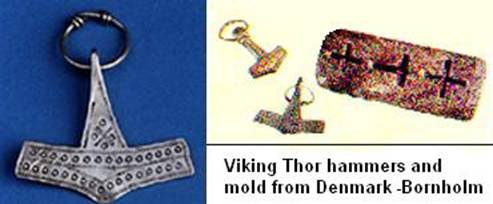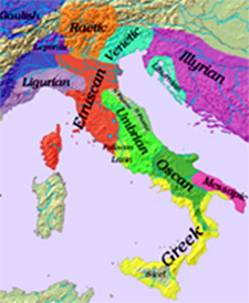|
The
double-edged ax, mentioned in the previous chapter, had a very
special meaning for the Okh people originating from Central
Asia. It was the symbol of the leader and represented strength
and power. The symbolism embedded in the double-edged ax is
not found only in Crete, but in several cultures all around
the world. The similar symbols found in these remote areas can
be interpreted as the common denominator of these cultures.
Below
we see some examples of these transformed forms. On the left,
certain Turkish rug designs can be considered as stylized
representations of the double-edged ax
(1). These symbols are
very similar to the symbols of the Ainu people presently
living in northern Japan (2). The Ainu tribes formerly
inhabited the Kuril Islands, southern Sakhalin and the
Kamchatka peninsula. Today Hokkaido remains the only homeland
of these people. The Ainu symbols drawn on wood and textiles
are clear indications of their Uighur origin.
 
At the center,
the stylized cross design belongs to the Khirgiz people of
Central Asia. Next are the symbols known as the Odin Cross of
the Vikings and the Celtic cross from Ireland? There is a
striking similarity between these symbols and the Uighur seals
shown in Universal Symbols. Odin was the main deity of
the Viking Mythology and Thor was his son
(3). The
double-edged hammer of Thor seen below is another version of
the double-edged ax (see Chapter 7), making part of the Okh
symbolism.

Odin known
also as Wotan was the primordial deity of the Norse Mythology.
He resided in a celestial region called
Asgård
(As-gord
or garden of the As
tribes). In Asgard we find the
connection to the As people who were belonging to the early
Asiatic Uighur Empire (see Chapter 1). It is very probable
that the Vikings, who were venerating their ancestors,
promoted some of their ancient leaders to the level of sacred
deity. This is how a complicated Norse pantheon came into
being. The meaning of
Odin
came probably from Ot-in, as a concatenation of two
monosyllabic root words of the Proto-language. “Ot” meant
“fire” and “in” means “descend” in Turkish. Therefore, Otin or
Odin means “descending fire”. This etymology agrees
well with the belief that the spear of Odin always found its
target. Since Odin resided in the unseen celestial realm, the
lightning (fire) descending from the sky was accepted to be no
other than his punishing spear.
Odin had
many sons but the most venerated one was Thor, the god of
thunder. Since thunder always follows lightning, the logical
conclusion requires that Thor is the son of Odin. But the name
Thor
may also have ancient connections to the Tur (pronounced as
Toor) tribes of Asia. The Tur tribes united with the Okh
tribes to form a loose federation of tribes called the
Tur-Okh or the
Turok, which were the ancestors of
the present Turkish people. Notice that Turks are known as the
Török –in Hungarian- and also as the Turani and Türki (Ref. 5
of Chapter 1) in many historical sources.
The map in
Chapter 1 shows a vast territory named Occitania which covers,
among other regions, north Italy. The ancient settlers of this
region are known to be the Etruscans. This name is the
concatenated form of E-Tur-Oscan, meaning “the Tur and
the Osc federation of tribes”. The E in “Etruscan” stands for
“Est” meaning “is /are” in Latin. One can find many linguistic
and cultural similarities between the Ural-Altaic languages
and Etruscan. There is a region in Italy called Toscana, whose
origin is most probably Tur-Osc-Ana, meaning “mother of
the Tur and Osc”. There is also the city called Tarquinia, in
the province of Lazio, Italy. Tarquinia was an important city
in ancient
Etruria, home of two Etruscan kings, Tarquinius Priscus and
Tarquinius Superbus. The similarity between
Tarquin
and Tarkan (see Chapter 5) points to the title of the
Eurasian ruler Tur-Khan. Considering the clear
correlation between these titles, it is difficult to accept
these similarities as being pure coincidence.

The
ancient languages spoken during the iron age of Italy can be
approximately distributed as shown in the map. But these
regions were not separated by clear-cut country borders, as we
know borders are today. They were rather locations where
written inscriptions of certain local dialects have been
densely found. The Oscan language had much in common with
Latin but contained many striking differences. Many common
word-groups in Latin were absent and were represented by
entirely different forms in Oscan. Dialects of Oscan include
Samnite, Marrucine, Paelignan, Vestnian, Sabine and Marsian.
These tribes all belonged to the Tur-Osc confederacy. The
Oscan speakers adopted the Etruscan alphabet to write in their
own dialect. Since Etruscan is still not deciphered, the
original meanings of the letters in the Etruscan alphabet need
detailed explanations.
This will be
done in further chapters. Below we see the 21 letters of the
Oscan alphabet. The red letters in bracket are the accepted
pronunciations, which is debatable, of the Oscan alphabet.
 |